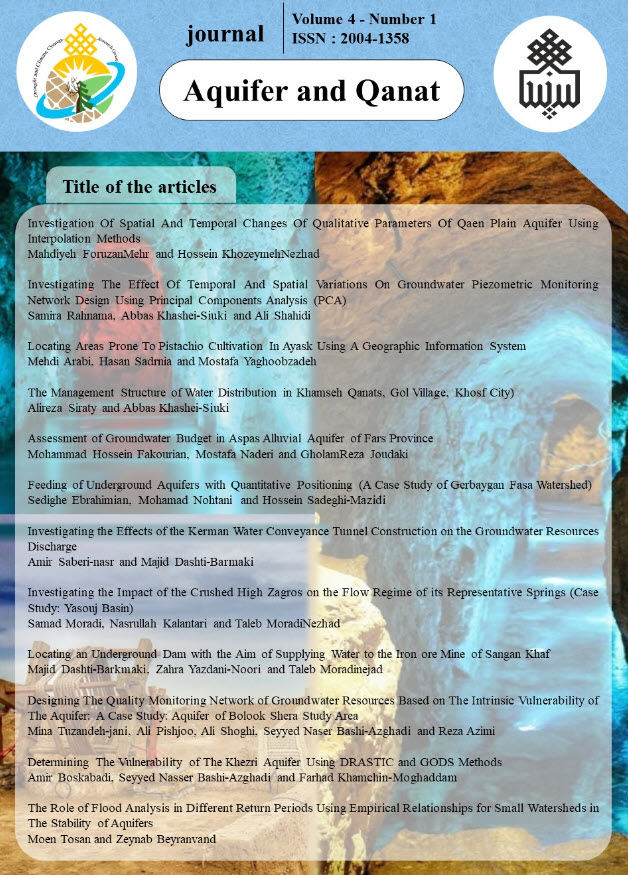Document Type : Original Article
Authors
1 PhD student in water resources, Department of Water Sciences and Engineering, University of Birjand, Birjand, Iran.
2 Associate Professor, Department of Water Science and Engineering, University of Birjand, Birjand, Iran.
Abstract
Given the importance of water resources, especially groundwater resources, the application of appropriate management methods in quantitative and qualitative areas is well understood. The purpose of this study is to determine the most appropriate interpolation method to investigate the spatial and temporal changes in water quality in the Qaen plain aquifer. In the present study, in order to evaluate water quality, the values of 10 water quality parameters including: concentration of calcium, magnesium, sodium, chlorine, potassium, bicarbonate, sulfate, salinity, TDS and acidity ions, using IDW, LPI, GPI, OK and SK interpolation methods. It has been interpolated and researched in 2009 and 2017. The results of comparing 5 intermediate methods using RE and RMSE values showed that for most of the quality parameters studied, IDW method with the lowest error rate is the most suitable method for intermediation. It was also found that the highest error rate was related to the LPI intermediate method for the hco3 parameter with a value of 11.84 and the lowest error value was related to the IDW method for the EC and Cl parameters with a value of 0.01 . By comparing IDW zoning maps in 2009 and 2017, it was found that the concentration of most of the studied quality parameters has increased in the statistical period under study. The upward trend in Qaen aquifer in the northeastern part is more intense and the highest upward trend in this part of the aquifer is related to the concentration of calcium ions, chlorine and salinity.
Keywords
Main Subjects

